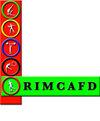游泳强度对铁人三项表现的影响
IF 0.7
4区 医学
Q4 SPORT SCIENCES
Revista Internacional De Medicina Y Ciencias De La Actividad Fisica Y Del Deporte
Pub Date : 2020-12-22
DOI:10.15366/rimcafd2020.80.004
引用次数: 1
摘要
目的:分析不同游泳强度对铁人三项后续骑行和跑步部分及短跑整体成绩的影响。方法:7例23岁以下及老年铁人三项运动员(身高1.74±0.04 m,体重70.82±6.76 kg,年龄23.42±3.25岁,最大摄氧量63.54±5.23 ml•kg-1•min-1)。他们以不同的游泳强度(先前750米测试的70%,80%和90%)进行了三次完整的铁人三项。在每个赛段结束和完成整个铁人三项后测量心率和乳酸。结果:90%的游泳强度获得了最佳的最终成绩。在这种情况下,游泳部门的乳酸和心率显著增加,在以下部门没有差异。结论:根据所研究的样本,短跑铁人三项的最终表现似乎受到游泳强度的制约,在中等训练的铁人三项运动员中观察到的最佳强度为90%。本文章由计算机程序翻译,如有差异,请以英文原文为准。
EFECTOS DE LA INTENSIDAD DE NADO EN EL RENDIMIENTO DEL TRIATLON
Objective: To analyze the influence of different swimming intensities on the subsequent cycling and running sectors and overall sprint triathlon performance. Methods: Seven sub23 and senior triathletes (height 1.74 ± 0.04 m, weight 70.82 ± 6.76 kg, age 23.42 ± 3.25 years, VO2 max 63.54 ± 5.23 ml • kg-1 • min-1) participated in this study. They carried out three complete triathlons at different swimming intensities (70%, 80% and 90% of a previous 750m test). Heart rate and lactate were measured at the end of each sector and after completing the whole triathlon. Results: The 90% swimming intensity obtained the best final performance. Lactate and heart rate in the swimming sector for this condition increased significantly, without differences in the following sectors. Conclusions: Based on the sample studied, the final performance in a sprint triathlon seems to be conditioned by the swim intensity, being 90% the best intensity observed in moderately trained triathletes.
求助全文
通过发布文献求助,成功后即可免费获取论文全文。
去求助
来源期刊
CiteScore
1.00
自引率
15.40%
发文量
49
审稿时长
>12 weeks
期刊介绍:
La Revista Internacional de Medicina y Ciencias de la Actividad Física y del Deporte (Rev.int.med.cienc.act.fis.deporte) es una revista multidisciplinar, científico-técnica, en torno a las Ciencias de la Actividad Física y del Deporte, que abarca temas tales como: actividades acuáticas, antropomotricidad, desarrollo y aprendizaje motor, arquitectura y equipamiento deportivo, bellas artes y deporte, biofísica, física y biomecánica del deporte, economía y deporte, bioquímica del deporte, biomatemáticas y estadística del deporte, comunicación y deporte, técnica y táctica deportiva, derecho deportivo, documentación deportiva, Educación Física y ciencias de la educación, educación física especial y deporte adaptado, expresión corporal, epistemología, ética y filosofía del deporte, medicina y salud de la actividad física, fisiología del ejercicio, sociología del deporte, psicología del deporte, motricidad humana, psicomotricidad, geografía y deporte, geología y deporte, gestión deportiva, historia de la educación física y del deporte, juegos motores, kineantropometría, literatura y lingüística del deporte, meteorología y deporte, ocio y recreación, olimpismo o tecnología del deporte. Todos los temas son publicables siempre que estén relacionados con la actividad física y el deporte y sea explícita esta relación en el artículo.

 求助内容:
求助内容: 应助结果提醒方式:
应助结果提醒方式:


